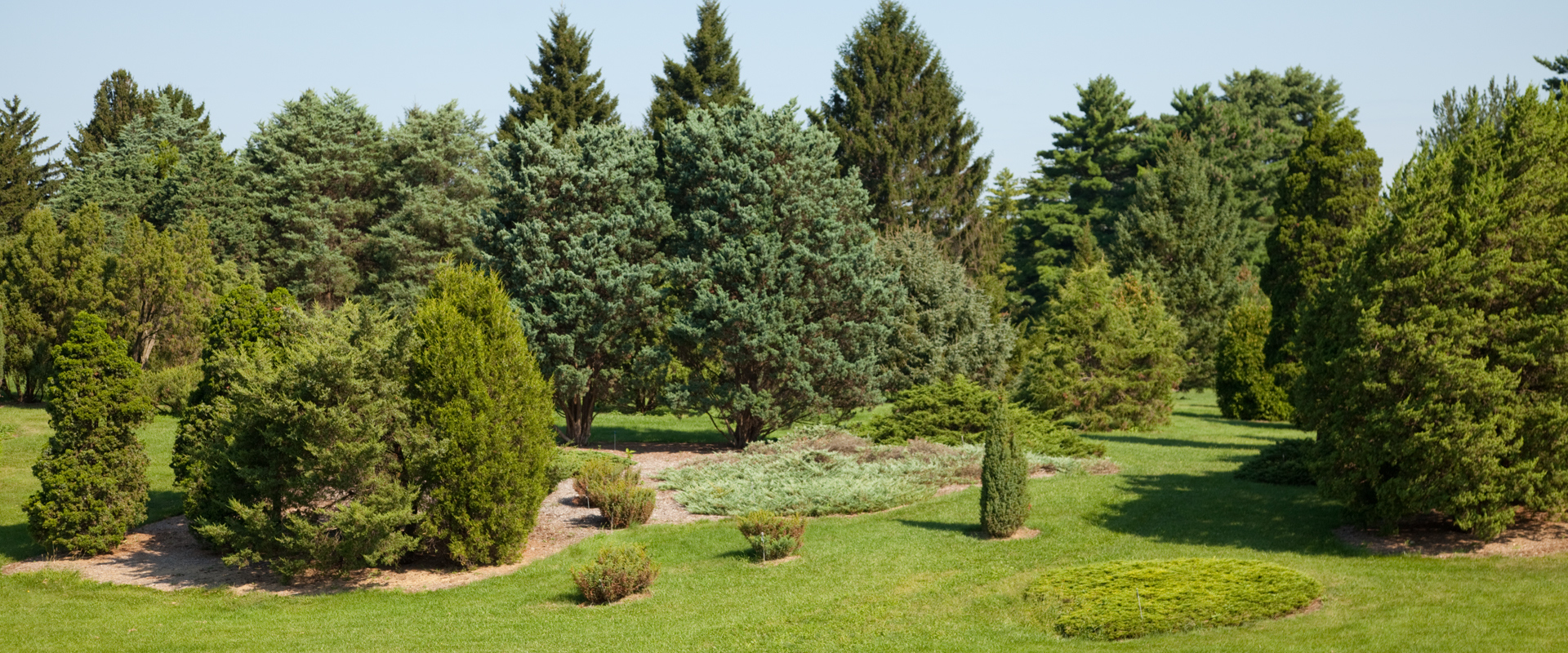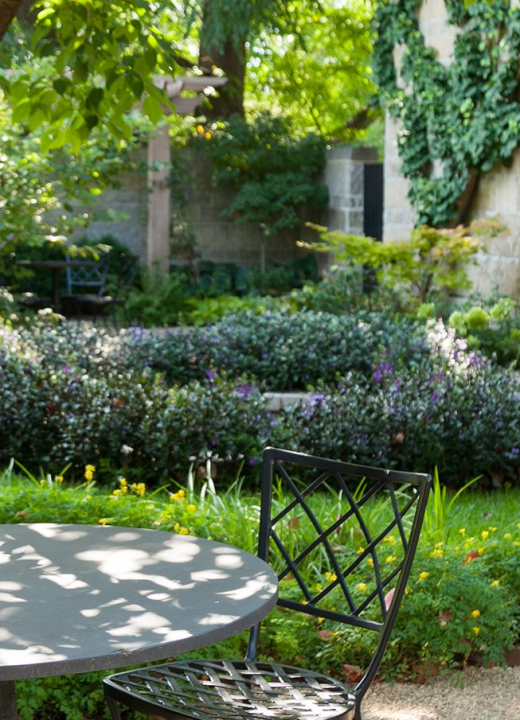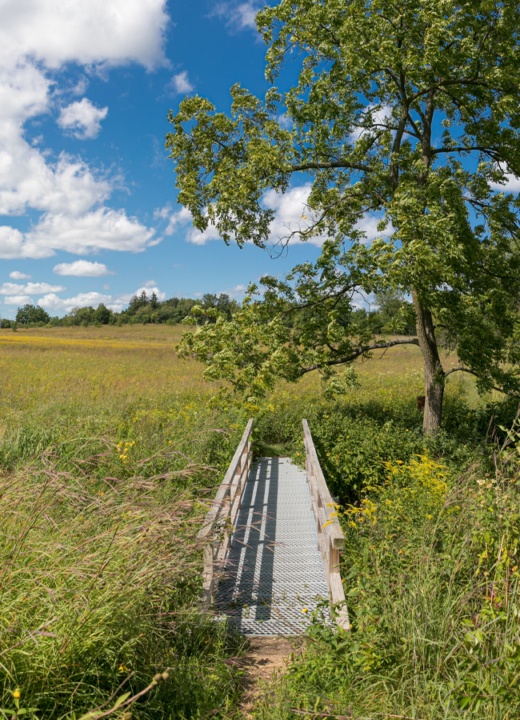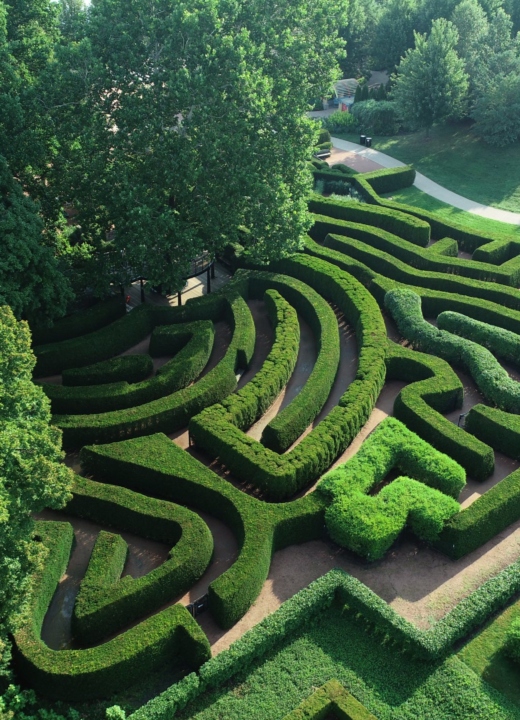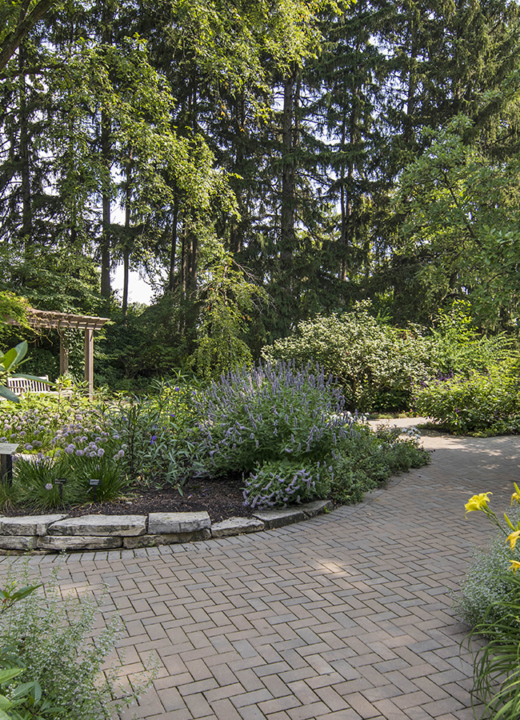The Conifer Collection at The Morton Arboretum shows the incredible diversity of coniferous species, highlighting dramatic differences in foliage density, shape, color, size, and growth form; contrasts in bark texture and color; and variety of cone shape and color.
Conifers are incredibly important throughout the world’s landscapes. The Conifer Collection displays the immense diversity among the many conifers that can grow in this region. Coniferous trees, or trees that bear cones, exist in many forms besides the archetypal Christmas tree, with its pyramidal form and dark evergreen needles. Plants in this collection can be trees or shrubs, large or small, have dark green to blue to lime green foliage; and needles that can be long and pointed, or short and scale-like. Conifers can have a columnar or rounded shape, can be low-growing shrubs, or giants piercing the sky.
This incredible diversity has been beautifully displayed across 22 acres. The Conifer Walk is a great way to explore this collection. Plants are grouped by family, to facilitate the understanding of the features in each member. As you walk the trail you will encounter: cypress family (including Juniperus, Cupressus, Chamaecyparis, and Thuja), pine family (Tsuga, Picea, Pinus, Pseudotsuga, Abies, and Larix), ginkgo family (Ginkgo), and yew family (Taxus and Cephalotaxus ). The Garden Conifer Collection is in a large bed south of the Conifer Walk. The trail can be reached by walking south on the sidewalk between the Children’s and Maze Gardens.
Explore the Conifer Walk to see what conifers capture your interest. It is an enjoyable walk and a special treat in the wintertime. Venture off the trail to get a closer look at trees that interest you.
Pine
The pine collection at The Morton Arboretum has many unusual forms of pine trees. It’s a fantastic opportunity to immerse yourself in a great range of pine trees, from native species, to cultivars, to wild-collected specimens from around the world.
The pine (pinus) section in the conifers has more than forty different pine species, varieties, and cultivars, represented by hundreds of specimens. Many of these species were collected in the wild from countries around the world: China, Korea, Norway, and Russia, to name a few. There are also wild-collected plants from Arizona, Illinois, Nebraska, New Jersey, and North Carolina.
To the north of the Conifer Walk is the dense columnar form and long needles of Swiss stone pine (Pinus cembra). Another favorite is the very unusually shaped weeping Eastern white pine (Pinus strobus ‘Pendula‘).
Spruce
Spruce are the dominant tree throughout much of the northern extensions of the world’s temperate regions and are very well represented in the Conifer Collection at The Morton Arboretum. Common species, such as those often used as Christmas trees, can be found here, as well as unusual cultivars such as the weeping white spruce. Also, admire the many spruce trees from distant countries.
There are more than forty kinds of spruce in the collection, including 19 different species. The spruce genus (Picea) has about 35 species worldwide, is most closely related to the pine genus (Pinus), and is well distributed throughout much of the Northern Hemisphere (boreal to subtropical regions). Spruces are the dominant tree throughout much of Scandinavia, Russia, Alaska, and Canada. Some spruce species are important economically for timber, pulpwood, resin, and Christmas tree production. Spruces used for Christmas trees are most typically Norway spruce (Picea abies) or Serbian spruce (P. omorika).
In the spruce section, make a stop at the large weeping white spruce (Picea glauca ‘Pendula’). This is a very unusual, extremely narrow, weeping spruce dating to 1958. It has the nickname the “Dr. Seuss tree” because of its unusual form. Especially eye-catching are the upswept white undersides of the dark green needles on the Serbian spruce (Picea omorika). The Serbian spruce is one of the most beautiful spruces for its up-curving pendulous branches. Oriental spruce (Picea orientalis) is also very graceful. It has short, dark green glossy needles. This superb medium-size spruce makes a great landscape tree. This collection also contains two very important accessions of dragon spruce (Picea asperata). These were originally collected in China by the renowned plant explorers Joseph F. Rock and Ernest H. Wilson.
Yews
Yews (Taxus) are the dominant genus in the yew family (Taxaceae) section. Taxus species are small coniferous trees or shrubs that have flat or lance-shaped needles and highly modified seed cones called arils.
The seed cones are red, look like berries, and are open at one end. The fleshy red part of the cone is actually a modified scale. Like juniper seeds, yew cones are popular with birds, which consume them and later disperse the seeds through their droppings.
Yew species grow slowly and are long-lived. In the Yew Collection at The Morton Arboretum, look for the many cultivars of Japanese yew (Taxus cuspidata). Notable specimens in this collection are several mature, upright forms of Anglo-Japanese yew (Taxus × media). These include Pilaris Anglo-Japanese yew (Taxus × media ‘Pilaris’), sentinel Anglo-Japanese yew (Taxus × media ‘Sentinalis‘), and upright Anglo-Japanese yew (Taxus × media ‘Stricta‘). These specimens are all over 50 years old and have developed into impressive narrow, upright forms. Another exciting feature of this collection is the amazing exfoliating red-green bark of the 80-year-old Hunnewell yew (Taxus × hunnewelliana).
Fir
Fir trees are easy to pick out because their cones face up rather than down, unlike other conifer cones. Stand amid these trees and admire their symmetry, unparalleled by any other coniferous genera.
As you approach the end of the Conifer Walk, you will find the large fir tree section. Fir trees are in the genus Abies and are represented by eighteen different kinds at The Morton Arboretum. Fir species often bear attractive cones that mature in one season. These cones disintegrate once mature, releasing the wind-borne seeds. Compared to spruce trees, the needles on fir are usually, but not always, noticeably softer. Firs are the most symmetrical of conifers. Often, the age of a tree up to 50 years can be determined simply by counting the branch whorls (one whorl per year).
Some of the noteworthy specimens, visible from the walkway, are white fir (Abies concolor) with its distinctive bluish needles, noble-looking silver fir (Abies alba), and formal-looking balsam fir (Abies balsamea). Take note of the selections of Korean fir (Abies koreana) in the Garden Conifer section. The cones of this species are a deep purple color even when immature.
It is a great experience to stroll through the collection in winter when needle colors tend to be more vivid. Explore the diverse fir specimens present in this section, and decide which kind is your favorite.
Garden Conifers
These trees are small enough for practically any garden space, no matter how limited. You will truly be astounded by the shapes, colors, and sizes to be found in this collection.
Visible from the Conifer Collection is the installed garden conifer section at The Morton Arboretum. This large area provides an opportunity to view garden conifers within the larger collection. This bed is surrounded by spruce on the south, hemlocks and yews to the west, and pines to the north.
Within the Garden Conifer section, the guest can view different types of conifers up close, observing differences between spruce, fir, pines, and yews side-by-side. Likewise, the great diversity of forms, textures, and colors available to the ambitious conifer gardener can be easily appreciated. Most of these trees are cultivars that have been selected for their slow growth, small mature size, and attractive shapes. These are an incredible resource for the home gardener, as they offer a great variety of appearance without needing the ample space of most fast-growing coniferous trees. In addition, some deciduous trees that are especially compatible with conifers have been included.
There are many noteworthy specimens to look for. One of the most interesting yews available is Taxus baccata ‘Amersfoot‘. It has a tight but somewhat irregular form and small rounded needles. The complete garden has well over 100 types of plants, all with interesting and special qualities.
Larch
Larch are deciduous conifers. They are a sight to behold in autumn, when their needles turn from green to yellow. Deciduous conifers are relatively unusual, so take the time to appreciate these great trees. In winter when these trees are bare, you can really appreciate the whorled symmetry of conifer trees.
Larch trees are in the genus Larix, family Pinaceae. Larch are one of the dominant plants in the boreal forests of Russia and Canada. In fact, they are found throughout much of the cooler temperate Northern Hemisphere. Unlike many other coniferous genera, Larix are deciduous and lose their needles every winter (after turning yellow in fall). The cones of larch trees are fairly small, starting off green or purple and ripening to brown within about six months.
Some of the species in the Larch Collection at The Morton Arboretum are wild-collected from countries such as Russia (Kuril larch (Larix gmelinii var. japonica), Siberian larch (L. sibirica) and China (Olga Bay larch (L. gmelinii var. olgensis), Prince Rupprecht’s larch (L. gmelinii var. principis-rupprechtii). You will also find various forms of larch in the Garden Conifer section.
If you really love the larch tree, you can also see larch scattered throughout the grounds, around Lake Marmo, Meadow Lake, and in the Children’s Garden.
